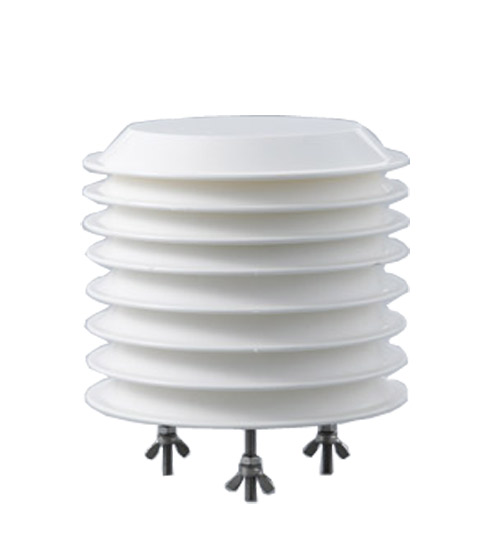

— Blogs —
—Products—
 Consumer hotline +8618073152920
Consumer hotline +8618073152920 WhatsApp:+8615367865107
Address:Room 102, District D, Houhu Industrial Park, Yuelu District, Changsha City, Hunan Province, China
Product knowledge
Time:2024-09-01 16:55:16 Popularity:637
There are various types of sensors used in greenhouse greenhouses, designed to fully monitor and control the environmental conditions within the greenhouse to optimise crop growth. Here are a few key sensor types and their functions:
- Soil Moisture Sensors: Detect moisture levels in the soil to help farmers and managers know when irrigation is needed and how much to irrigate to avoid over- or under-irrigation and to keep soil moisture in the optimal range.
- Soil PH Sensor: Measures the pH of the soil to ensure that crops are grown in the right pH conditions. Soil pH has a direct impact on plant nutrient uptake, so monitoring and regulating soil pH is key to healthy crop growth.
- Soil Nutrient Sensor: Detects nutrient levels in the soil to help farmers understand the fertility status of the soil and guide fertiliser decisions to meet the nutrient needs of crops.
- Water Level Sensor: monitors water levels in the irrigation system to ensure proper operation of the irrigation system and timely replenishment of water to avoid crop growth problems caused by lack of water or over-watering.
- Water Quality Sensor: Measures parameters such as PH, conductivity and dissolved oxygen of the irrigation water to ensure that the water quality meets the requirements of crop growth and to avoid negative impacts on crops due to water quality problems.
 |  |  |
| Soil NPK Sensor | Soil Moisture Temperature sensor | 7 in 1 Soil Integrated Sensor |
 |  |  |
| Soil pH sensor | Soil EC Sensor | 4-in-1 Soil Temperature Moisture EC Salt Sensor |
- Temperature and humidity sensors: used to measure air temperature and humidity, they are a core component in greenhouse environmental monitoring systems. Crop growth is closely related to temperature and humidity, so real-time monitoring of these parameters is critical to maintaining a suitable growing environment. Temperature and humidity sensors are often suspended in the air to more accurately monitor changes in temperature and humidity within the greenhouse.
- Illumination sensor: measure light intensity to ensure that crops are growing in the right light conditions. Light intensity affects photosynthesis and yield, and light sensor data can be used to determine whether light levels need to be increased or decreased to achieve the optimum growing configuration for the crop.
- Wind speed and direction sensors: While the effects of wind may not be as significant in a greenhouse environment as they are outdoors, wind speed and direction sensors are still important in certain designs, such as naturally ventilated greenhouses. They can monitor wind force and direction to help adjust ventilation strategies to optimise air circulation and temperature distribution within the greenhouse.
- Carbon dioxide sensors (CO2 sensor): monitor the CO2 concentration in the greenhouse, which is essential for crop photosynthesis. co2 sensors ensure that the crop is grown at the right CO2 concentration, thus improving crop yield and quality.
These sensors are connected through IoT technology and transmit the collected data to the control centre in real time, making it easy for managers to monitor the greenhouse environment and make timely adjustments. Through the integrated use of these sensors, intelligent management of the greenhouse environment can be achieved, improving crop yield and quality while reducing resource consumption and costs.
 |  |  |  |  |
| Anemometer Wind Speed sensor | Wind direction sensor | Tipping bucket rain gauge sensor | Tipping bucket rain gauge sensor | Piezoelectric Rain Gauge |
 |  |  |  |  |
| Atmospheric Temperature Humidity air pressure Sensor | ultrasonic wind speed and direction sensor | 5 in1 Ultrasonic Weather Station Sensor | All-in-One Weather Station | 7 in1 Ultrasonic Weather Station Sensor |
 |  |  |  |  |
| Solar Radiation Sensor | Solar Radiation Sensor | Photosynthetically Active Radiation Sensor; | illumination sensor | Carbon dioxide(CO2) sensor |
- Accuracy and stability of the sensor: ensure that the sensor can work stably in the greenhouse environment for a long time and provide accurate data.
- Weather resistance and durability of the sensor: Greenhouse environments can have high temperatures, high humidity or other extreme conditions, and the sensor needs to be able to adapt to these environments.
- Sensor cost and ease of use: Choose a cost-effective sensor based on budget and actual needs, and consider its ease of installation and maintenance.
- Data transmission and integration capabilities: modern greenhouses often use automated systems, and sensors need to be able to integrate with these systems, e.g. by transmitting data via RS485, wireless or wired networks.
In summary, greenhouses typically use temperature, humidity, light, CO2, soil moisture and soil temperature sensors to monitor and control environmental conditions to optimise plant growth.
Related recommendations
Sensors & Weather Stations Catalog
Agriculture Sensors and Weather Stations Catalog-NiuBoL.pdf
Weather Stations Catalog-NiuBoL.pdf
Related products
 Combined air temperature and relative humidity sensor
Combined air temperature and relative humidity sensor Soil Moisture Temperature sensor for irrigation
Soil Moisture Temperature sensor for irrigation Soil pH sensor RS485 soil Testing instrument soil ph meter for agriculture
Soil pH sensor RS485 soil Testing instrument soil ph meter for agriculture Wind Speed sensor Output Modbus/RS485/Analog/0-5V/4-20mA
Wind Speed sensor Output Modbus/RS485/Analog/0-5V/4-20mA Tipping bucket rain gauge for weather monitoring auto rainfall sensor RS485/Outdoor/stainless steel
Tipping bucket rain gauge for weather monitoring auto rainfall sensor RS485/Outdoor/stainless steel Pyranometer Solar Radiation Sensor 4-20mA/RS485
Pyranometer Solar Radiation Sensor 4-20mA/RS485
Screenshot, WhatsApp to identify the QR code
WhatsApp number:+8615367865107
(Click on WhatsApp to copy and add friends)